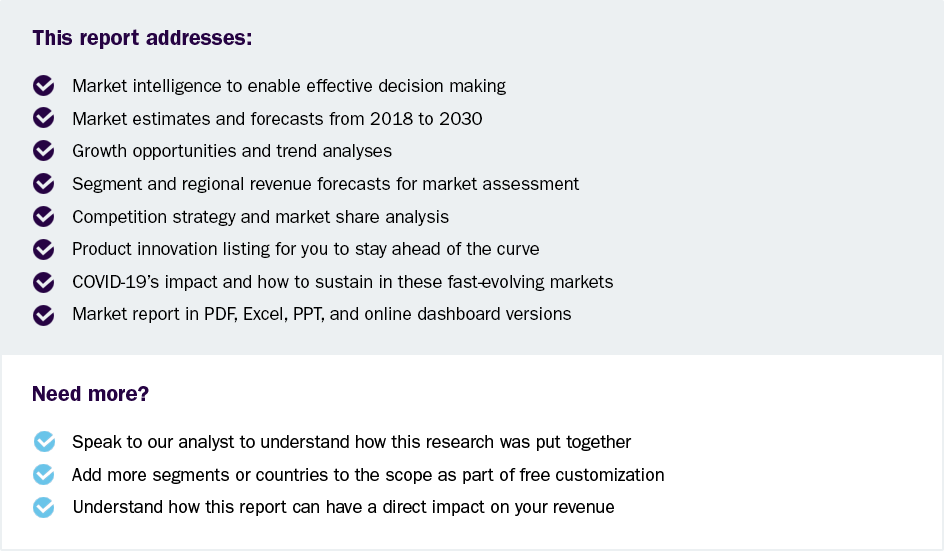Dental Bone Void Filler Market To Reach $143.3 Million By 2030
Dental Bone Void Filler Market Growth & Trends
The global dental bone void filler market size is expected to reach USD 143.3 million by 2030, registering a CAGR of 5.9% from 2024 to 2030, according to a new report by Grand View Research, Inc. The growth is attributable to the biological performance of materials, such as calcium phosphate-based bone substitutes that are biocompatible, have good volume maintenance over time, and are bioabsorbable. Dental professionals are at risk of contracting COVID-19 infection due to proximity with patients during the dental procedures. This factor has created fear among the dental professionals leading to reduced patient intake, which can, in turn, hamper the market growth.
Bone grafting is being widely practiced in dentistry as poor fixation and loosening of dental implants are common complications. Thus, void fillers are used to minimize these complications and facilitate cellular growth & targeted high-quality bone formation, as well as increase the contact interface with the graft. This results in stabilization and better fixation of dental implants. Such benefits are expected to boost market growth.
The global market is also driven by the availability of advanced materials, such as hydroxyapatite. For instance, Osbone, hydroxyapatite, is a graft material indicated for augmentation of the atrophied alveolar ridge and filling bone defects. The benefit of Osbone includes a minimal residual risk of allergic and infections reactions., which, in turn, ensures long-term and fast stability of the scaffolding for bone generation. Such advantages increase the demand for the product thus boosting the market.
 Request a free sample copy or view report summary: Dental Bone Void Filler Market Report
Request a free sample copy or view report summary: Dental Bone Void Filler Market Report
Dental Bone Void Filler Market Report Highlights
-
Demineralized Bone Matrix (DBM) dominated the market in 2023 owing to the increasing incidence of musculoskeletal disorders.
-
Tricalcium Phosphate (TCP) is expected to grow at a CAGR of 6.9% over the forecast period owing to its excellent biocompatibility and osteoconductivity, which are essential for effective bone regeneration and integration.
-
The dental bone void filler market in Europe held a lucrative share of 39.0% in 2023 owing to the increasing prevalence of dental conditions and the high rate of tooth extractions in the region.
Dental Bone Void Filler Market Segmentation
Grand View Research has segmented the global dental bone void filler market on the basis of material and region:
Dental Bone Void Filler Material Outlook (Revenue, USD Million, 2018 - 2030)
-
Tricalcium phosphate ceramics
-
Biphasic calcium phosphate ceramics
-
Calcium phosphate cements
-
Calcium sulfates
-
Demineralized Bone Matrix (DBM)
-
Others
Dental Bone Void Filler Regional Outlook (Revenue, USD Million, 2018 - 2030)
-
North America
-
U.S.
-
Canada
-
Mexico
-
-
Europe
-
UK
-
Germany
-
France
-
Italy
-
Spain
-
Denmark
-
Sweden
-
Norway
-
-
Asia Pacific
-
China
-
Japan
-
India
-
Australia
-
South Korea
-
Thailand
-
-
Latin America
-
Brazil
-
Argentina
-
-
Middle East and Africa (MEA)
-
South Africa
-
Saudi Arabia
-
UAE
-
Kuwait
-
List of Key Players of Dental Bone Void Filler Market
-
Curasan, Inc.
-
Olympus Terumo Biomaterials Corporation
-
Medtronic
-
Graftys
-
Johnson & Johnson Services, Inc
-
Stryker
-
Osteogene Tech
-
BONESUPPORT AB
-
ORTHOREBIRTH CO.LTD

